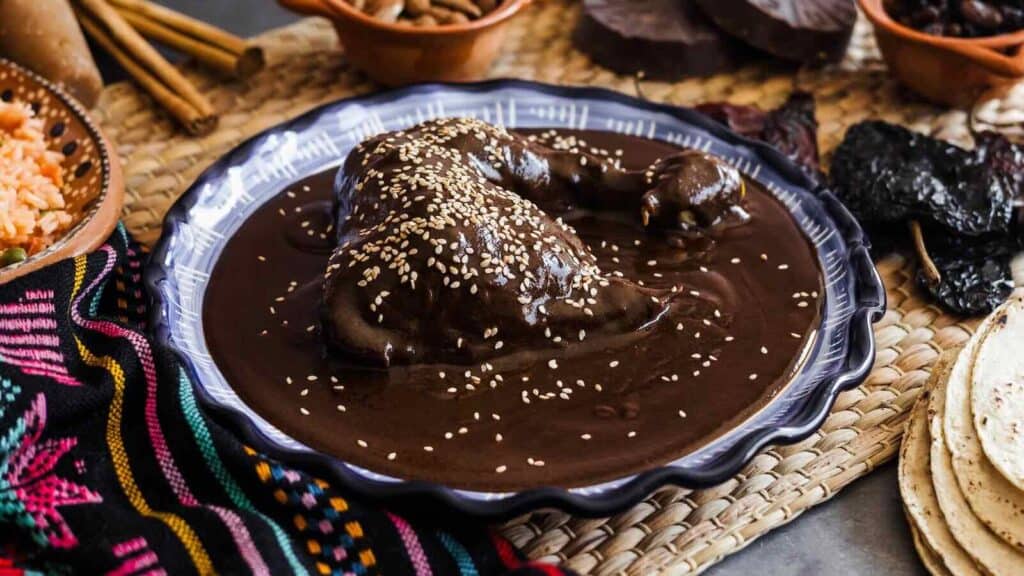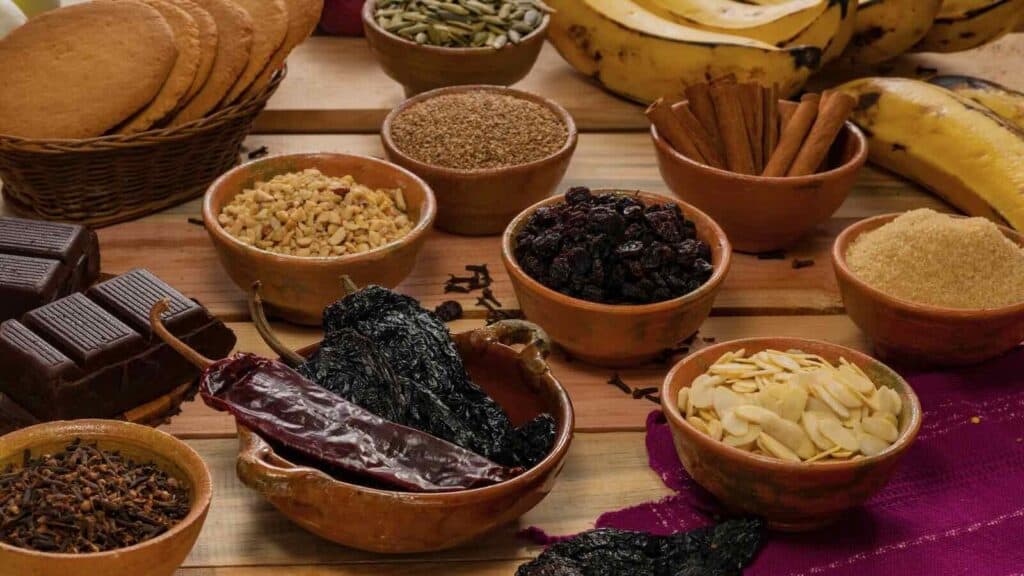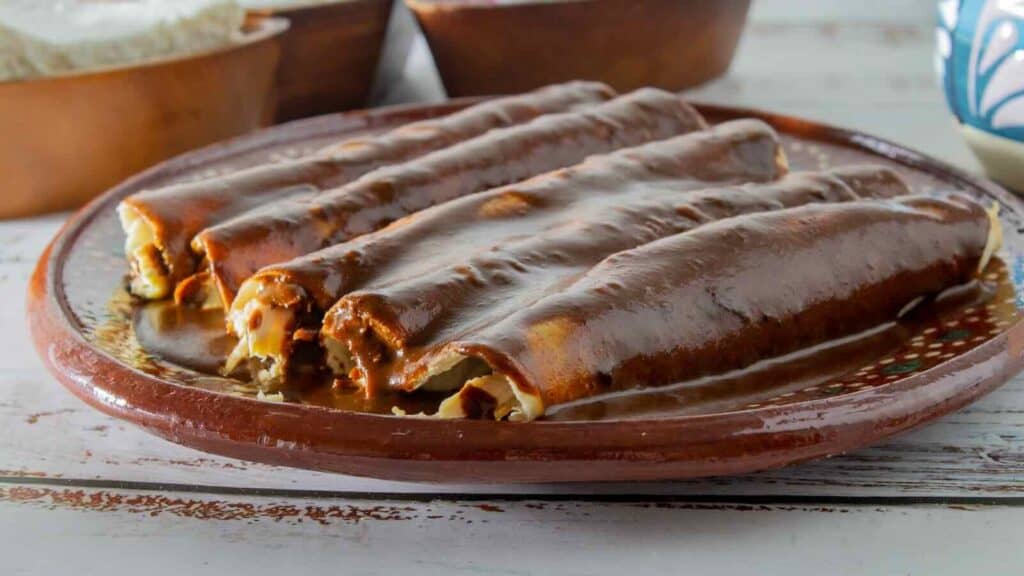Cinco de Mayo calls for a feast that matches the holiday’s spirit, and few dishes deliver like mole, a sauce so complex it’s practically a love letter to Mexican cuisine. As San Francisco’s Mission District gets crowded for the holiday, mole stands out, especially the famed mole poblano, a Puebla specialty tied to the holiday’s roots. This blend of chiles, spices, and chocolate is a labor of love, with a history as layered as its flavors.
When prepared the correct way by someone who really knows what they are doing, Mole is an absolute delicious dish. We have definitely had our fair share of great mole, but there have also been some disappointing versions. If you have never tried the dish, make sure to do your research and find out where to get the real deal. The good thing is that you don’t need to search out a Michelin-Starred restaurant or spend a lot of money. Some of the best mole out there can be found at small, unassuming Mexican restaurants, especially family-run establishments who serve their secret family recipes passed down through generations.
If you are looking for a great mole in San Francisco, you might want to try El Buen Comer in The Mission. We have not personally eaten there, however they won the grand prize at the “Moles to Die For” contest in 2024, so can guess that it is probably a safe bet.

The Origins of Mole
Mole’s story starts in Mexico, with most fingers pointing to Puebla, the location of Cinco de Mayo’s 1862 battle victory, though Oaxaca claims a piece of the pie too. The word “mole” comes from the Nahuatl “mōlli,” meaning sauce or stew, hinting at its pre-Hispanic roots. Indigenous peoples like the Aztecs mixed chiles, seeds, and herbs into rich blends, serving them with turkey or beans long before Spanish ships arrived. When conquistadors brought new ingredients like almonds, raisins, cinnamon, the stage was set for mole as we know it.
The most famous tale, likely part legend, places mole poblano’s birth in the late 1600s at Puebla’s Convent of Santa Rosa. A nun, Sor Andrea de la Asunción, is said to have created it for a visiting archbishop, tossing together dried chiles, nuts, stale bread, and a pinch of chocolate in a panic to impress. The result? A sauce so delicious it became a staple for feasts. Another story credits Puebla’s cooks for blending Old and New World flavors to honor a viceroy, with chocolate as the genius twist. Oaxaca, meanwhile, boasts seven moles like black, red, green, and more, each tied to local traditions.
Truth is, mole probably grew from countless kitchens, with Puebla and Oaxaca refining it into art. By the 19th century, mole poblano was Puebla’s pride, served at weddings and holidays, to celebrate Mexico’s spirit.

How It’s Made
Making mole is a complicated process where every ingredient plays a part and patience is key. Mole poblano, the most iconic, starts with dried chiles: ancho for sweetness, mulato for depth, pasilla for smokiness, and chipotle for a subtle kick. These are toasted to bring out flavor, then soaked and blended into a paste. Next come the aromatics such as garlic, onion and tomatoes for richness. Nuts (almonds, peanuts or sesame seeds), raisins & spices like cinnamon or cloves add warmth, while stale tortillas or bread thicken the mix.

The magic happens over hours of simmering, as the ingredients meld into a sauce. Chocolate, often just a tablespoon or two, goes in last, giving mole its signature complexity. Some recipes call for up to 20 ingredients, each tweaked by family tradition. In Puebla, it’s typically served over turkey or chicken, with rice to soak up every drop. Oaxaca’s mole negro, leans heavier on chocolate and charred chiles, paired with pork or enchiladas.
Home cooks might spend a day on mole, grinding with a metate or simmering in a clay pot, though modern blenders speed things up.
Why Mole Matters
Mole is an amazing dish, blending Aztec ingenuity with Spanish flair. Its versatility shines in Puebla’s markets, where vendors sling mole coloradito (red and mild) or manchamanteles (sweet with fruit). On Cinco de Mayo, mole poblano feels like a nod to Puebla’s victory, a dish that’s festive yet grounded in history.







